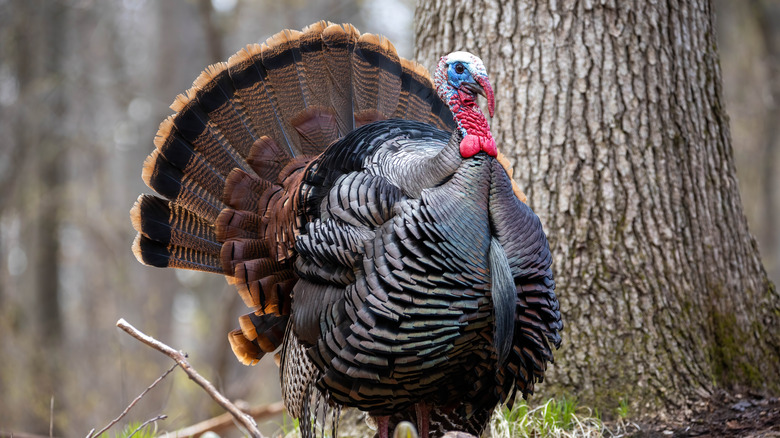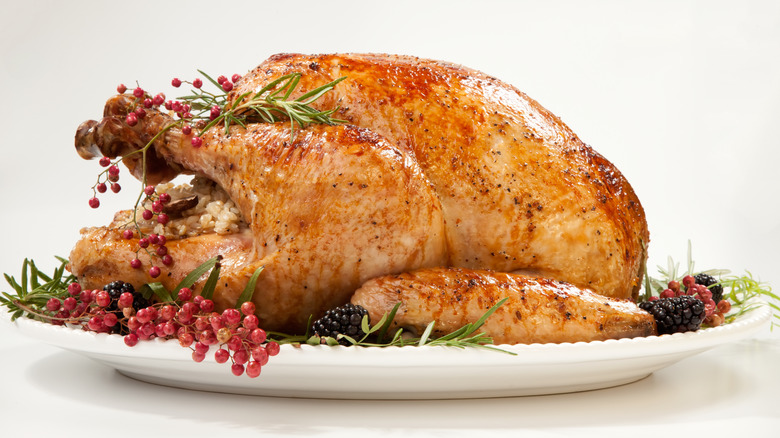The Reason We Don't Eat Turkey Tails On Thanksgiving
No Thanksgiving dinner in the U.S. would be complete without a roasted turkey. The main dish has been a tradition on American tables since Abraham Lincoln declared Thanksgiving a national holiday in the late 1800s (via Britannica). According to the U.S. Poultry and Egg Association, Americans consume about 46 million turkeys every year on Thanksgiving alone — so it's no surprise that the holiday has been nicknamed Turkey Day (via Insider). There are a lot of ways to prepare a Thanksgiving turkey, from roasting it to deep frying it.
And everyone has their favorite cut of meat from the bird, whether you prefer the white meat breast or the dark meat turkey leg. However, there's one part of the turkey that you'll never see on your plate come Thanksgiving — the tail. Why is the turkey tail not included with the bird you snagged from the grocery store? Here's the answer, along with what really happens to the tails instead.
Americans prefer white meat
The real reason that the typical Thanksgiving turkey doesn't have a tail is due to Americans' preferences when it comes to their poultry. "Tails did and do not fit into what has become our culinary fascination with white meat," Michael Carolan, professor of sociology at the College for Liberal Arts at Colorado State University, told Mental Floss. However, those tails don't go to waste. He added, "If the consumer was just going to throw the tail away, or will not miss it if it was omitted, [suppliers] saw an opportunity to make additional money."
So where do the turkey tails end up instead? The Conversation reports that many are sent to the Pacific Islands, where there's a high demand for that particular part of poultry, which is high in fat and cheap to purchase. In 2007, Samoans were consuming about 44 pounds of turkey tails every single year.

